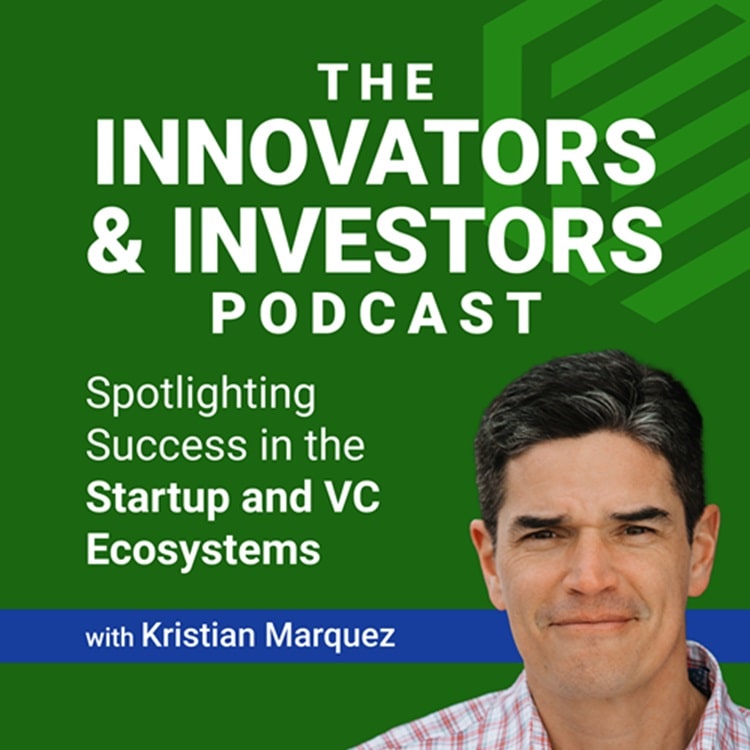The Changing Landscape of Venture Capital and Founder Support
The fundraising environment for Seed and Series A rounds has shifted dramatically. Gone are the days of easy capital and sky-high valuations. Investors are now demanding greater traction, stronger unit economics, and a clear path to profitability. This shift places immense pressure on founders, forcing them to be more resourceful and strategic about their funding choices. Founders often need guidance in preparing for more rigorous due diligence processes, negotiating term sheets that protect their interests, and building financial models that demonstrate sustainable growth. This is where venture assistance becomes paramount, offering expertise in navigating the intricacies of today’s VC landscape.
A key aspect of venture assistance is helping founders understand when and how to pursue alternative funding sources. It’s not just about avoiding dilution; it’s about choosing the right capital for the stage of the business and its specific needs. Many early-stage companies aren’t yet ready for VC, either because they haven’t validated their market sufficiently or because their business model doesn’t fit the VC growth trajectory. In these cases, non-dilutive options can provide the runway needed to achieve key milestones and become more attractive to venture investors down the line.
Why Explore Non-Dilutive Funding?
The primary advantage of non-dilutive funding is, of course, that it doesn’t require giving up equity in your company. This means founders retain more control and ownership, which can be crucial, especially in the early stages. However, the benefits extend beyond just ownership:
- Maintaining Control: Retain decision-making power and strategic direction.
- Alignment of Incentives: Founders and early team members are more motivated when they have a larger stake in the company’s success.
- Flexibility: Non-dilutive options can sometimes offer more flexible repayment terms compared to equity financing.
- Bridge to VC: Can provide a bridge to VC funding by allowing the company to reach key milestones and increase its valuation.
However, it’s crucial to understand the trade-offs. Non-dilutive funding often comes with its own set of challenges, such as higher interest rates, strict repayment schedules, or limitations on how the funds can be used. A venture assistance professional can help founders evaluate these trade-offs and determine if non-dilutive funding is the right fit for their specific circumstances.
Types of Non-Dilutive Funding Options
Grants
Grants are essentially free money – you don’t have to repay them and don’t give up any equity. They are typically awarded by government agencies, foundations, or other organizations to support specific projects or initiatives.
Pros:
- No equity dilution.
- No repayment obligations.
- Can provide valuable validation for your business idea.
Cons:
- Highly competitive.
- Specific eligibility requirements.
- Often restricted to certain industries or types of projects (e.g., research and development, social impact).
- Application process can be time-consuming and complex.
- Reporting requirements can be burdensome.
Real-World Scenario: A biotech startup developing a novel cancer therapy could apply for grants from the National Institutes of Health (NIH) or the National Science Foundation (NSF). Similarly, a company developing a sustainable agriculture technology could seek grants from the USDA. The SBIR (Small Business Innovation Research) and STTR (Small Business Technology Transfer) programs are excellent resources for early-stage technology companies seeking grant funding.
Venture Assistance Perspective: Venture assistance providers can help founders identify relevant grant opportunities, prepare compelling applications, and navigate the often-complex grant writing process. They can also provide guidance on how to structure the company’s R&D efforts to align with grant requirements.
Debt Financing
Debt financing involves borrowing money from a lender, such as a bank or a specialized debt fund, and repaying it over time with interest. While it doesn’t dilute equity, it does create a liability on the company’s balance sheet.
Pros:
- No equity dilution.
- Can be used for a variety of purposes, such as working capital, equipment purchases, or expansion.
- Can be easier to obtain than VC funding, especially for companies with predictable revenue streams.
Cons:
- Requires regular repayments with interest, which can strain cash flow.
- Often requires collateral, such as company assets or personal guarantees.
- Can be difficult to obtain for early-stage companies with limited operating history.
- Can impact credit rating.
Real-World Scenario: A SaaS company with predictable monthly recurring revenue (MRR) could secure a line of credit from a bank to finance customer acquisition costs. Similarly, a manufacturing company could obtain a term loan to purchase new equipment. Companies like Lighter Capital and Clearbanc (now Clearco) specialize in providing debt financing to early-stage startups based on their revenue and other metrics.
Venture Assistance Perspective: Venture assistance professionals can help founders assess their debt capacity, prepare loan applications, and negotiate favorable terms with lenders. They can also help founders understand the covenants and restrictions associated with debt financing and ensure that the company can meet its repayment obligations.
Revenue-Based Financing
Revenue-based financing is a type of financing where you repay the lender a percentage of your future revenue until a predetermined amount is paid back, plus a fee. It’s a hybrid between debt and equity, but it doesn’t involve giving up ownership.
Pros:
- No equity dilution.
- Repayments are tied to revenue, so they adjust automatically based on the company’s performance.
- Can be a good option for companies with predictable revenue streams but limited assets.
- Often faster and easier to obtain than traditional debt financing.
Cons:
- Can be more expensive than traditional debt financing, especially if the company grows rapidly.
- The lender has access to the company’s revenue data, which some founders may be uncomfortable with.
- May require personal guarantees.
Real-World Scenario: An e-commerce company could use Revenue Based Financing to finance inventory purchases or marketing campaigns. The company would then repay the lender a percentage of its sales revenue until the agreed-upon amount is repaid. Companies like Pipe and Capchase offer Revenue Based Financing solutions tailored to SaaS and e-commerce businesses.
Venture Assistance Perspective: Venture assistance providers can help founders evaluate Revenue Based Financing offers, understand the repayment terms, and assess the potential impact on the company’s cash flow. They can also help founders prepare the necessary financial information for the Revenue Based Financing provider.
Crowdfunding
Crowdfunding involves raising small amounts of money from a large number of people, typically through an online platform. There are several types of crowdfunding, including:
- Reward-based crowdfunding: Backers receive a reward in exchange for their contribution (e.g., a product, a service, or recognition).
- Equity crowdfunding: Backers receive equity in the company in exchange for their investment.
- Debt crowdfunding: Backers lend money to the company and receive interest payments in return.
- Donation-based crowdfunding: Backers donate money to the company without expecting anything in return.
For the purposes of this article, we’ll focus on reward-based crowdfunding as a non-dilutive option.
Pros:
- No equity dilution (for reward-based crowdfunding).
- Can generate valuable buzz and awareness for your product or service.
- Can validate market demand before launching a product.
- Can build a community of early adopters and brand advocates.
Cons:
- Requires significant upfront effort to plan and execute a successful campaign.
- Can be time-consuming to manage and fulfill rewards.
- Success is not guaranteed – many crowdfunding campaigns fail.
- May need to give away a significant number of products or services as rewards.
Real-World Scenario: A startup developing a new consumer product, such as a smart home device or a fitness gadget, could launch a reward-based crowdfunding campaign on platforms like Kickstarter or Indiegogo to raise funds for manufacturing and marketing. Successful campaigns like the Pebble smartwatch and the Oculus Rift VR headset demonstrate the potential of crowdfunding to launch innovative products.
Venture Assistance Perspective: Venture assistance providers can help founders plan and execute effective crowdfunding campaigns. This includes defining the campaign goals, creating compelling marketing materials, setting appropriate reward tiers, and managing communication with backers. They can also help founders leverage the crowdfunding campaign to build a strong brand and attract future investors.
Government Programs and Tax Credits
Many governments offer programs and tax credits to support small businesses and startups. These programs can provide access to funding, resources, and expertise.
Pros:
- Can provide non-dilutive funding or reduce the cost of doing business.
- Can provide access to valuable resources and expertise.
- Can enhance the company’s credibility and reputation.
Cons:
- Eligibility requirements can be complex.
- Application process can be time-consuming.
- May require compliance with specific regulations.
- The amount of funding or tax credits may be limited.
Real-World Scenario: A company investing in research and development (R&D) could be eligible for R&D tax credits, which can significantly reduce its tax burden. Similarly, a company hiring employees from disadvantaged backgrounds could be eligible for tax credits or subsidies. The US Small Business Administration (SBA) offers a variety of programs and resources to support small businesses, including loan guarantees, counseling, and training.
Venture Assistance Perspective: Venture assistance providers can help founders identify relevant government programs and tax credits, navigate the application process, and ensure compliance with regulations. They can also help founders develop strategies to maximize the benefits of these programs.
Adapting to the Current Fundraising Environment: A Founder’s Checklist
In today’s challenging fundraising environment, founders need to be more prepared than ever. Here’s a checklist of key steps to take:
- Assess your funding needs realistically: Don’t over-raise. Determine the minimum amount of capital needed to achieve key milestones.
- Develop a strong financial model: Demonstrate a clear path to profitability and sustainable growth. Investors are prioritizing unit economics.
- Build a compelling narrative: Articulate your value proposition clearly and concisely. Highlight your competitive advantages and market opportunity.
- Focus on traction and execution: Investors want to see evidence that your product is gaining traction and that you can execute your plan.
- Consider non-dilutive funding options: Explore grants, debt financing, Revenue Based Financing, and crowdfunding to extend your runway and reduce dilution.
- Network strategically: Build relationships with investors, advisors, and other founders in your industry.
- Prepare for rigorous due diligence: Be ready to provide detailed financial information, customer data, and legal documents.
- Seek expert advice: Work with venture assistance providers, mentors, and legal counsel to navigate the fundraising process.
The Role of Venture Assistance in Navigating Non-Dilutive Funding
Navigating the world of non-dilutive funding can be complex and time-consuming. Venture assistance providers play a crucial role in helping founders:
- Identify suitable funding options: Assess the company’s needs and identify the most appropriate non-dilutive funding sources.
- Prepare applications and proposals: Assist with grant writing, loan applications, and crowdfunding campaign planning.
- Negotiate terms: Help founders negotiate favorable terms with lenders and investors.
- Manage compliance: Ensure compliance with regulations and reporting requirements.
- Develop financial models: Create accurate and realistic financial projections to support funding applications.
- Provide strategic guidance: Offer advice on how to structure the company’s finances and operations to maximize its chances of success.
By leveraging the expertise of venture assistance professionals, founders can increase their chances of securing non-dilutive funding and building a sustainable business.
In today’s evolving venture capital landscape, understanding and exploring non-dilutive funding options is no longer a luxury but a necessity for early-stage startups. By strategically leveraging grants, debt financing, revenue-based financing, and crowdfunding, founders can retain greater control of their companies and build a stronger foundation for long-term success. The key is to carefully assess the pros and cons of each option, understand the trade-offs involved, and seek expert guidance from venture assistance providers who can help navigate the complexities of the fundraising process. With the right approach, founders can secure the capital they need to fuel growth while minimizing equity dilution and building a sustainable, thriving business.


